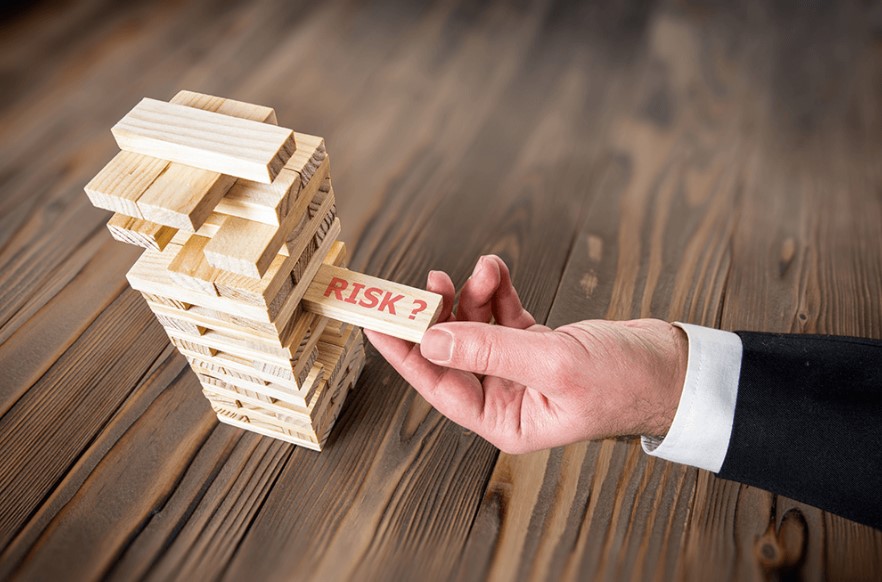
Like all investments, the real estate market has its ups and downs. You never know when the market is going to shift or turn, so how do you determine what investments are worth the risk? Every real estate investment should be evaluated based on its own risk-reward profile, but here are some risk factors investors should consider when evaluating any investments.
- Market Risk
Think for a moment about today’s real estate market. The market has slowed, the rental market is strong, but prices are declining. Is now a good time to jump in? It’s a controversial topic, but unfortunately, unless you can predict the future, I do not believe there is a way to time the market.
Yes, the typical real estate cycle is 18 years and runs through 4 phases (recovery, expansion, hyper supply and recession)—but it’s not so easy to know where you are in the cycle until after it ends.
2. Asset Risk
Asset risk reflects the possible unsuccessful operation of a project. It is determined by the project type, its management, and the market in which it is located. Each of these factors can affect the expected operating cash flows from a project. A multi-family fully rented under long-term leases has a lower business risk than land investment where construction of a new development is anticipated.
Generally, asset risks are especially concentrated in management and the market. Management must keep spaces leased and maintained to preserve the value of the investment, and management must innovate, respond to competitive conditions, and operate the property efficiently.
All risks factors speak to why sponsor due diligence is very important. Market changes constitute another key risk, but one over which an operator sometimes has little control. Government regulations, changes in local demographics, and market inventory would all affect a project’s business risk.
3. Financial Risk
Financial risk primarily reflects uncertainty about the residual equity return when debt financing is used. Debt increases the variability of the investment return to the property owner; increased leverage can mean increased returns, but since debt service must always be paid before the equity holder, it might also mean lessened or even negative returns.
Financial risk also includes interest rate risk; larger-than-expected increases in interest rates with a loan will increase a property’s debt service and thus decrease the rate of return to equity investors. Increased interest rates may also lower the price that subsequent buyers are willing to pay. Yield rates that investors require for real estate tend to move with interest rates generally. Be strategic when it comes to liquidity and leverage. Leverage is great when the market is good, but it can quickly kill a project when the market turns, and operators or developers are not ready. Liquidity is just as important in a market shift, but it can also help a project get through a short-term cost overrun or delay.
4. Inflation / Systemic Risk
Inflation / systemic risk can arise at various phases of a market cycle. In the case of inflation, it may be at a higher rate than was anticipated when a project was underwritten, or returns were projected. If this occurs and a proper contingency is not in place, an investor’s return on investment will be reduced. Other systemic risks include war and political changes that influence the whole economy. Political changes can be on the national level, or most importantly vary from city to city.
On the flip side, inflation risk can be great for real estate. Real estate is a primary end product people buy with the cash they earn. If inflation is going up, real estate tends to go up as well because real estate is a part of inflation. Inflation also whittles down the real cost of debt. If you want to build real wealth, you must own assets that appreciate with or preferably faster than inflation. Investing in real estate, stocks, and alternative assets is key.

5. Liquidity Risk
Liquidity risk relates to whether, and when, the investment can be “cashed out” in the future. Unlike gold or stocks, real estate is a relatively illiquid asset class. Moreover, the returns will usually happen over a longer time period. If you are in a situation where you might suddenly need equity, you may be unable to access the equity investment in real estate.
In addition, as it happened in 2008, if the economy is suffering through a downturn, financing sources may dry up to a significant extent, reducing the pool of potential buyers to those who don’t require conventional financing. It is thus sometimes difficult to sell a property quickly without substantially discounting the price below fair market value.

Risk and Return in Real Estate Investing
There are pros and cons to the additional risk real estate may present. Increased risks require that an investor demand increased returns in compensation. The return needs to be sufficiently above the current risk-free rate of return, such as a savings account or CD, in order for someone to risk their capital. As we discussed in the first part of this guide, diversification is key. Blending investments into different pools of varying risk can help minimize the impact of one investment not going well.
Being aware and educated of the potential downsides, and then following logic and clear thinking can get you far. It’s not always easy to do—but real estate markets usually move slow, and one can usually adapt as a project is under development. In a construction project that will take several years to complete, the day-to-day swings in the market become irrelevant.

